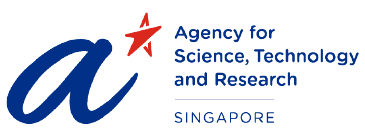Highlights
Light could show electrons' personality split: paper in Physical Review Letters
It’s said that if at first you don’t succeed, you should try, try again. Sometimes it's also worth trying something different. This is what CQT scientists propose for spotting the quantum effect of spin-charge separation, sought since its prediction three decades ago.
The work by Dimitris G. Angelakis, Mingxia Huo, Elica Kyoseva and Leong Chuan Kwek, published in Physical Review Letters, is highlighted by the journal as an “Editors Suggestion” and is also the subject of a Viewpoint article.
Update: This paper also featured in the weekly "Research Highlights" section of the journal Nature, issue date 21 April 2011.
Spin-charge separation was predicted in 1981 by the physicist Duncan Haldane. It is a phenomenon in which electrons, usually considered indivisible, literally split in two. The prediction applies to electrons traveling in very fine wires at low temperatures. In such circumstances, electrons are thought to form a “Luttinger liquid”.
Theory suggests that electrons in a Luttinger liquid split into a magnetic and an electric part, known as a spinon and a chargon, that move at different speeds. This is an extremely counter-intuitive idea because the magnetic spin and the electric charge of the electron are thought to characterise the same inseparable entity.
Experiments to test the idea are challenging and, in spite of seminal efforts over the past 30 years, scientists have seen no clear proof of spin-charge separation yet.
Dimitris and his collaborators suggest a novel strategy: that experimentalists simulate a Luttinger liquid with light. They show that photons shone into hollow fibers packed with two types of atoms can mimic the predicted splitting behaviour of electrons.
The way the photons propagate or bounce off the trapped atoms is analogous to the electrons' spin-charge separation. The main advantage is that the requirements to observe the optical effect are within reach of current optical technology. Combined with the wide tunability of the system parameters, this promises to provide an extremely clean result. Seeing the equivalent of spin-charge separation in an optical system would not only confirm a major, puzzling prediction of many body quantum physics, but also support the emerging idea of using photonic systems as quantum simulators to understand complex condensed matter effects.
A schematic of the system under consideration. Two quantum light pulses enter a hollow-core photonic crystal ï¬ber from the left. The ï¬ber is ï¬lled with two atomic gases. By appropriately controlling external laser ï¬elds (not shown in the picture), the photon pulses can be slowed down and eventually stored as stationary light-matter excitations. Due to the existence of atoms in the ï¬ber, the trapped photons are forced interact with each other like electrons do, allowing us to reach the spin-charge separation regime. Subsequent releasing of the e??ective photonic “chargon” and “spinon” allows for the e??cient measurement of the so called “spectral function” characteristic of the spin-charge separation using available optical technology.
For further details, see "Luttinger Liquid of Photons and Spin-Sharge Separation in Hollow-Core Fibers", Phys. Rev. Lett. 106, 153601 (2011), arXiv:1006.1644 and the accompanying Viewpoint by Gregory A. Fiete of the University of Texas at Austin, US, "In a tight spot, spin and charge separate", Physics 4, 30 (2011).
Dimitris and Kwek are both Principal Investigators at CQT. Dimitris is also a lecturer at the Technical University of Crete and Kwek an Associate Professor at Singapore’s National Institute of Education and an Adjunct Associate Professor at Nanyang Technological University. Mingxia is a PhD student and Elica a postdoctoral researcher at CQT.







